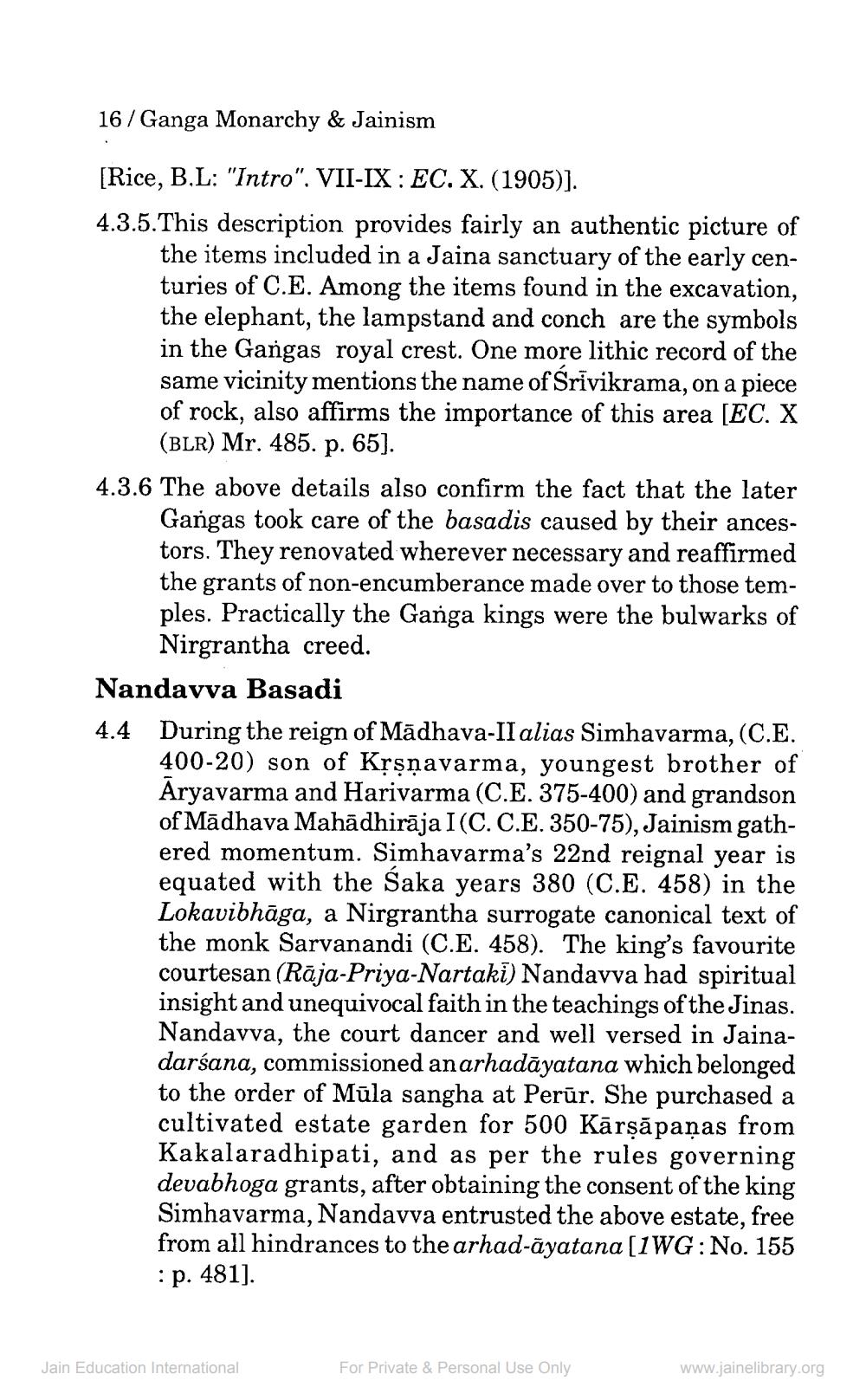________________
16 / Ganga Monarchy & Jainism
[Rice, B.L: "Intro". VII-IX: EC. X. (1905)). 4.3.5.This description provides fairly an authentic picture of
the items included in a Jaina sanctuary of the early centuries of C.E. Among the items found in the excavation, the elephant, the lampstand and conch are the symbols in the Gangas royal crest. One more lithic record of the same vicinity mentions the name of Srivikrama, on a piece of rock, also affirms the importance of this area (EC. X
(BLR) Mr. 485. p. 65). 4.3.6 The above details also confirm the fact that the later
Gangas took care of the basadis caused by their ancestors. They renovated wherever necessary and reaffirmed the grants of non-encumberance made over to those temples. Practically the Ganga kings were the bulwarks of
Nirgrantha creed. Nandavva Basadi 4.4 During the reign of Mādhava-II alias Simhavarma, (C.E.
400-20) son of Krşņavarma, youngest brother of Aryavarma and Harivarma (C.E. 375-400) and grandson of Mādhava Mahādhirāja I(C.C.E. 350-75), Jainism gathered momentum. Simhavarma's 22nd reignal year is equated with the Saka years 380 (C.E. 458) in the Lokavibhāga, a Nirgrantha surrogate canonical text of the monk Sarvanandi (C.E. 458). The king's favourite courtesan (Rāja-Priya-Nartaki) Nandavva had spiritual insight and unequivocal faith in the teachings of the Jinas. Nandavva, the court dancer and well versed in Jainadarśana, commissioned anarhadāyatana which belonged to the order of Mūla sangha at Perūr. She purchased a cultivated estate garden for 500 Kārşāpaņas from Kakalaradhipati, and as per the rules governing devabhoga grants, after obtaining the consent of the king Simhavarma, Nandavva entrusted the above estate, free from all hindrances to the arhad-āyatana (1WG:No. 155 : p. 481].
Jain Education International
For Private & Personal Use Only
www.jainelibrary.org




